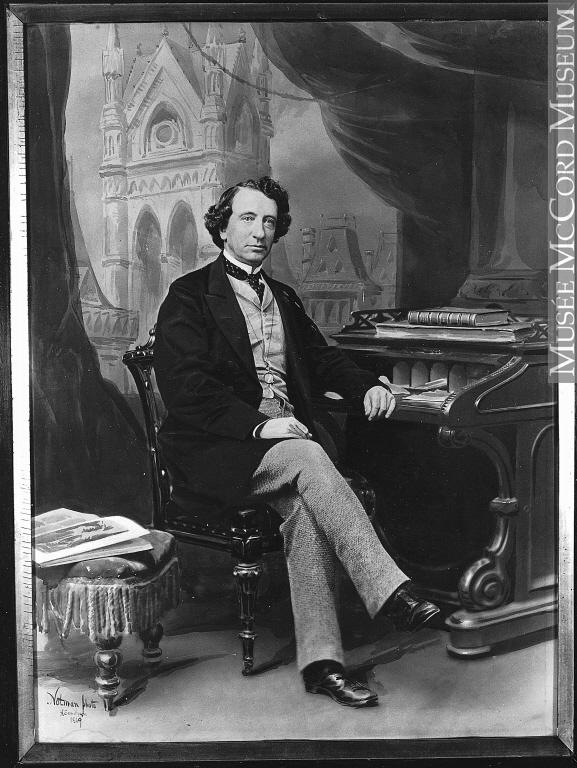Dominion of Canada Forms
Business and political hopes align in the British North America Act
Date: 1867
The 1860s was a tumultuous decade for North America. South of the 49th parallel, the United States was embroiled in the American Civil War. To the north, British colonists had become uneasy with the American military's growing might. By the time the war ended in 1865, colonists feared that unified American forces would focus their sights on expansion northward.
At the same time, British public opinion concerning the North American colonies had soured. The colonies had become a financial burden for the taxpayers across the Atlantic. What’s more, political gridlock between Ontario and Québec had resulted in a recession, threatening the existence of the colonies altogether, as well as the investments of businessmen on both sides of the Atlantic.
Some of these businessmen included future Fathers of Confederation like John A. Macdonald, George Brown, and Sir George-Étienne Cartier. Wishing to keep their ties with Britain — and British financiers — they proposed confederating the colonies. The move would ensure a steady cash flow through loans from British banks; a strong, centralized government; and, a more capable military defence against any American-attempted annexation. Beyond stability, confederation also bore promises of westward expansion and enterprise.
Thus on July 1, 1867, the British Colonial Office and the Fathers of Confederation signed the British North America Act, officially forming the Dominion of Canada. Initially, the young nation included only New Brunswick, Nova Scotia, Québec and Ontario. But soon enough, the dominion would spread west, realizing the founders' vision of a country stretching from coast to coast.
Sources:
1. Commito, Michael. “Andrew Smith, Review of ‘British Businessmen and Canadian Confederation: Constitution Making in an Era of Anglo-Globalization.’” Strata Book Reviews, History Graduate Student Association, aedhgsa.ca/docs/Strata/Volume_3/Strata_vol3_MICHAEL_COMMITO.pdf.
2. Confederation, 1867. The Canadian Encyclopedia, thecanadianencyclopedia.ca/en/article/confederation-1867.
3. “Confederation.” Our Country, Our Parliament, Parliament of Canada, lop.parl.ca/about/parliament/education/ourcountryourparliament/html_booklet/confederation-e.html.
4. Gilding, Ben. “The Silent Framers of British North American Union: The Colonial Office and Canadian Confederation, 1851–67.” Canadian Historical Review, 10 Oct. 2018, utpjournals.press/doi/full/10.3138/chr.2017-0053.
5. “July 1, 1867.” Canada: A People's History, CBC News, 2001, www.cbc.ca/history/EPCONTENTSE1EP8CH6PA2LE.html.
6. Smith, Andrew. British Businessmen and Canadian Confederation: Constitution Making in an Era of Anglo-Globalization. McGill-Queen's University Press, 2014.





